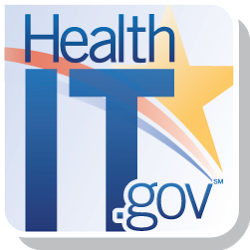 ONC Health IT Guide Published
ONC Health IT Guide Published
Kathy Kenyon, JD / Senior Policy Analyst and
Steven Posnack / Director Federal Policy Division, ONC
When front line clinicians confront a clinical mishap or unsafe condition in EHR-enabled healthcare settings (such as a medication error or a missed diagnosis) they may not connect the clinical event with how EHR use could have helped prevent it, how misuse or failure to use EHR functionality as intended contributed to the problem, or how weaknesses in EHR configuration, interfaces, or usability contributed.
To help clinicians and other EHR users address health IT-related safety issues, we have posted a guide and slide deck [PDF – 2.7 MB] [PPTX – 3.0 MB] called How to Identify and Address Unsafe Conditions Associated with Health IT, developed by ECRI Institute under an ONC contract. The guide aims to help healthcare organizations and Patient Safety Organizations (and perhaps health IT technology developers, industry professional associations, and risk management and liability insurance companies) improve reporting of unsafe conditions associated with health IT, EHRs in particular.
This guide is one of a series of tools developed to addresses the potential unintended consequences of health IT as part of our commitment to improving health IT safety based on the Health IT Patient Safety Action and Surveillance Plan (Health IT Safety Plan).
Both the Health IT Safety Plan and the ONC-sponsored Institute of Medicine report on Health IT and Patient Safety: Building Safer Systems for Better Care recognized the need for more reporting of health IT safety events and unsafe conditions, and urged a larger role for Patient Safety Organizations (PSOs), listed by AHRQ, in reporting and follow-up of errors and health IT related events.
In the past year, we have seen more and better results in identifying and classifying health IT-related safety issues. The authors of How to Identify and Address Unsafe Conditions Associated with Health IT are from the ECRI Institute PSO, which in December 2012 published a “deep dive” research project on safety issues associated with health IT use. As is generally true in health care, most of the reported safety events were related to medications and diagnostic information (labs and imaging). What made the “deep dive” project different was that it pointed to “computer” and “human-computer” factors as underlying causes, with the most common problems being associated with EHR system interfaces, wrong input into EHRs, system configuration problems, wrong records retrieved, and software functionality issues.
We hope the guide published today will help stakeholders identify unsafe conditions with underlying health IT causes so they are more frequently reported. The guide points to two standardized reporting tools that should help describe the role of health IT in adverse events and unsafe conditions, specifically AHRQ’s Common Formats (version 1.2) and AHRQ’s Hazard Manager. These tools allow aggregation and comparison of health IT-related events and unsafe conditions over time.
This guide also addresses the need for follow-up on reports. Busy people in healthcare (as in other fields) need feedback or they tend not to report. The work of providing that feedback begins with healthcare organizations. However, when it comes to understanding health IT’s role in safety events, healthcare organizations may need help. This guide describes how PSOs and EHR technology developers can help by, for example, bringing analytical sophistication that helps tease out the complex “sociotechnical factors” involved in health IT-associated events. PSOs can also provide a legally protected space for reporting and follow-up, including the involvement of EHR developers.
Health IT safety is a shared responsibility. In many ways, EHR users cannot optimize the safety and safe use of EHRs without help. But we cannot realize that optimization until we have better evidence about the safety problems associated with health IT. Getting that evidence requires being able to identify the underlying health IT causes of unsafe conditions in healthcare and reporting them
We don’t expect the discussion will end here or with this guide so feel free to add your thoughts and comments below. Additionally, to help stakeholders use the guide, we will be offering a webinar (details will be posted soon).
This article was originally published on the ONC’s Health IT Buzz blog and is republished here with permission.
